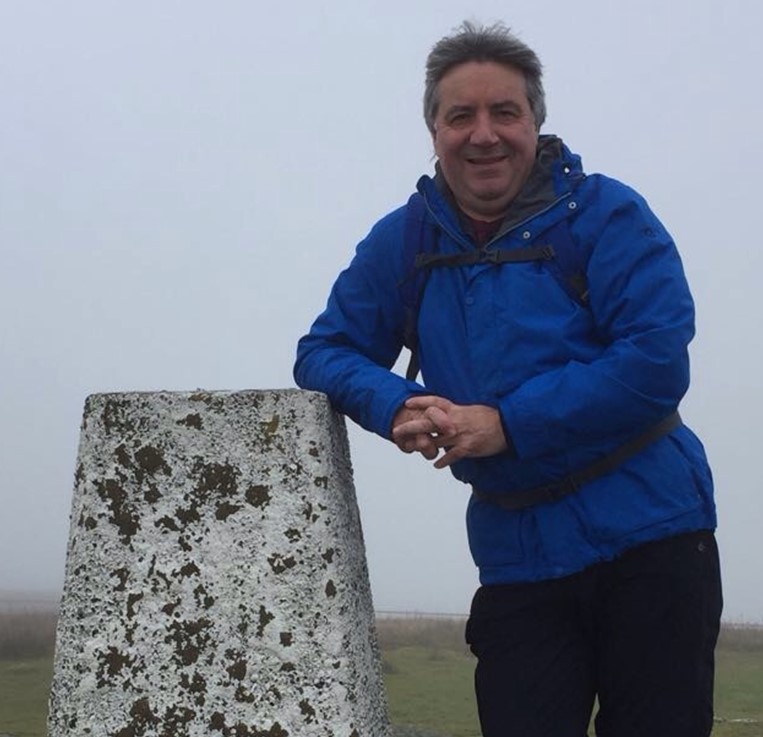Dr David Assinder
Lecturer in Ocean Sciences

Affiliations
Contact info
Room: 401 Westbury Mount Phone: 01248 382854
E-mail: d.assinder@bangor.ac.uk
Web: Google Scholar
I graduated in Environmental Sciences from Lancaster University in 1979 and undertook my PhD on radionuclide behaviour in the estuarine environment at Lancaster between 1979 and 1982. I became a Visiting Fellow at the Bedford Institute of Oceanography in Nova Scotia, Canada during 1983 investigating nuclear discharges to Canadian and Arctic waters. In 1984 and 1985 I worked in the Organic Geochemistry Unit, School of Chemistry, University of Bristol as a postdoctoral researcher examining organic compounds and their availability from coal.
In 1985 I moved to the School of Ocean Sciences as a Lecturer/Senior Lecturer until 2007, then School Administrator/Deputy College Manager until 2018 and finally back into teaching in 2018.
I am interested in all aspects of marine biogeochemistry but have specialised in marine and estuarine pollution particularly in relation to radionuclides, but also metals and plastics. Particular areas of interest include the occurrence, transport and fate of natural and artificial radionuclides in terrestrial and marine ecosystems including assessing the radiation dose to humans using coastal areas. This has encompassed work in relation to Sellafield and Springfields discharges to the Irish Sea and the fate of Chernobyl-derived radionuclides in the environment.
I have been employed by the QAA to undertake reviews of teaching quality in the UK and I am a STEM Ambassador with a particular interest in addressing issues related to harassment of staff and students in UK Universities.
- Published
Radiological assessment of the Ribble Estuary
Newstead, S., Mudge, S., Assinder, DJ. & Bourne, GS., 1995, Environmental Impact of Radioactive Releases. p. 761-762 (International Atomic Energy Agency Proceedings Series 2 : Nuclear Safety and Environmental Protection).Research output: Chapter in Book/Report/Conference proceeding › Chapter › peer-review
- Published
Holocene evolution of seasonal stratification in the Celtic Sea: refined age model, mixing depths and foraminiferal stratigraphy.
Scourse, J. D., Austin, W. E., Long, B. T., Assinder, D. J. & Huws, D., 30 Nov 2002, In: Marine Geology. 191, 3-4, p. 119-145Research output: Contribution to journal › Article › peer-review
- Published
Radiocarbon dating the marine environment: the significance of benthic boundary layer processes.
Scourse, J. D., Kennedy, H., Austin, W. E., Papadimitriou, S., Evans, J., Assinder, D. J. & Long, B. T., 1 Jan 2002.Research output: Contribution to conference › Paper
- Published
Stepwise chemical degradations of a UK bituminous coal
Shaw, P. M., Brassell, S. C., Assinder, D. J. & Eglinton, G., Apr 1988, In: Fuel. 67, 4, p. 557-564Research output: Contribution to journal › Article › peer-review
- Published
Curium isotopes and americium-242m in Irish Sea sediment
Yamamoto, M., Kuwabara, J. & Assinder, DJ., 1998, In: RADIOCHIMICA ACTA. 83, 3, p. 121-126Research output: Contribution to journal › Article › peer-review
- Published
Chemical leaching behavior of 237Np from intertidal coastal sediment in the Irish Sea
Yamamoto, M., Yamauchi, Y., Komura, K., Ueno, K. & Assinder, D. J., 15 Jul 1991, In: Journal of Radioanalytical and Nuclear Chemistry . 154, 5, p. 299-307Research output: Contribution to journal › Article › peer-review
- Published
Determination of low-level99Tc in environmental samples by high resolution ICP-MS
Yamamoto, M., Syarbaini, Kofuji, K., Tsumura, A., Komura, K., Ueno, K. & Assinder, D., Oct 1995, In: Journal of Radioanalytical and Nuclear Chemistry . 197, 1, p. 185-194Research output: Contribution to journal › Article › peer-review

